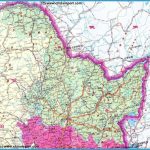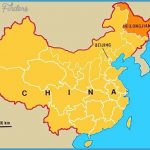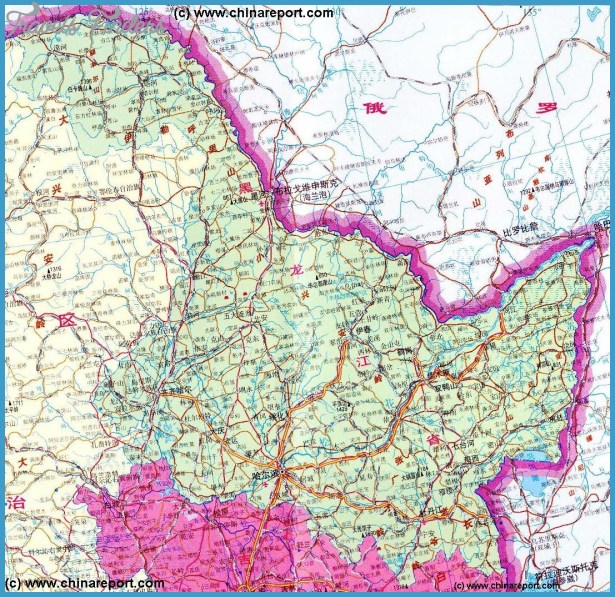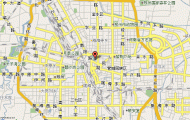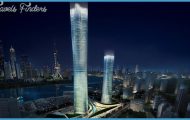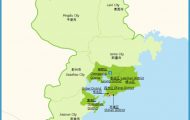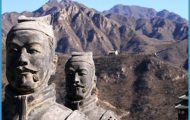Area: 469,OOOsq.km/181,OOOsq. miles Population: 35,750,000. Capital: Harbin
Heilongjiang, the northernmost province of China, lies between 121°13’ and 135’06’E and 43°26′ and 53534’N. It is separated from Russia by two rivers, the Heilongjiang (Amur in Russian), which gave the province its name, and the Wusulijiang (Ussuri in Russian).
Heilongjiang comprises the Little Chingan Range, the northern section of the Central Manchurian Mountains, and the marshlands along the lower reaches ofthe Songhuajiang and Wusulijiang rivers.
The climate is continental, with long and very hard winters (on February 13th 1969 the thermometer fell to -52.3°C/-62°F) and extremely short, warm summers. On the plains the average January temperatures are -20°C/-4°F, -30°C/-22°F in the mountains, and 23°C/73°F in July. In some regions in the extreme north-west there is hardly arvy summer at all.
Until well into the 19th c. Heilongjiang was a region which knew only History cattle-raising and fishing. Industrialisation began with the building ofthe railway between 1896 and 1903. In the years 1900-05 it was occupied by the Russians and from 1931 by the Japanese. After 1949 it became an important part of the new China. The plains were cultivated and forests utilised.
In the industrial sector the wood-processing industry (including paper Economy factories) and sugar-mills play an important part. Rich coal deposits are mined near Shuanggyashan and other places, and near Anda lies the giant Daqing oil-field. Important agricultural products include wheat, sugar-beet, sunflower seed and flax. The province is also a major supplier of timber.
The capital Harbin (see entry) and its surroundings are of particular Places to interest.

